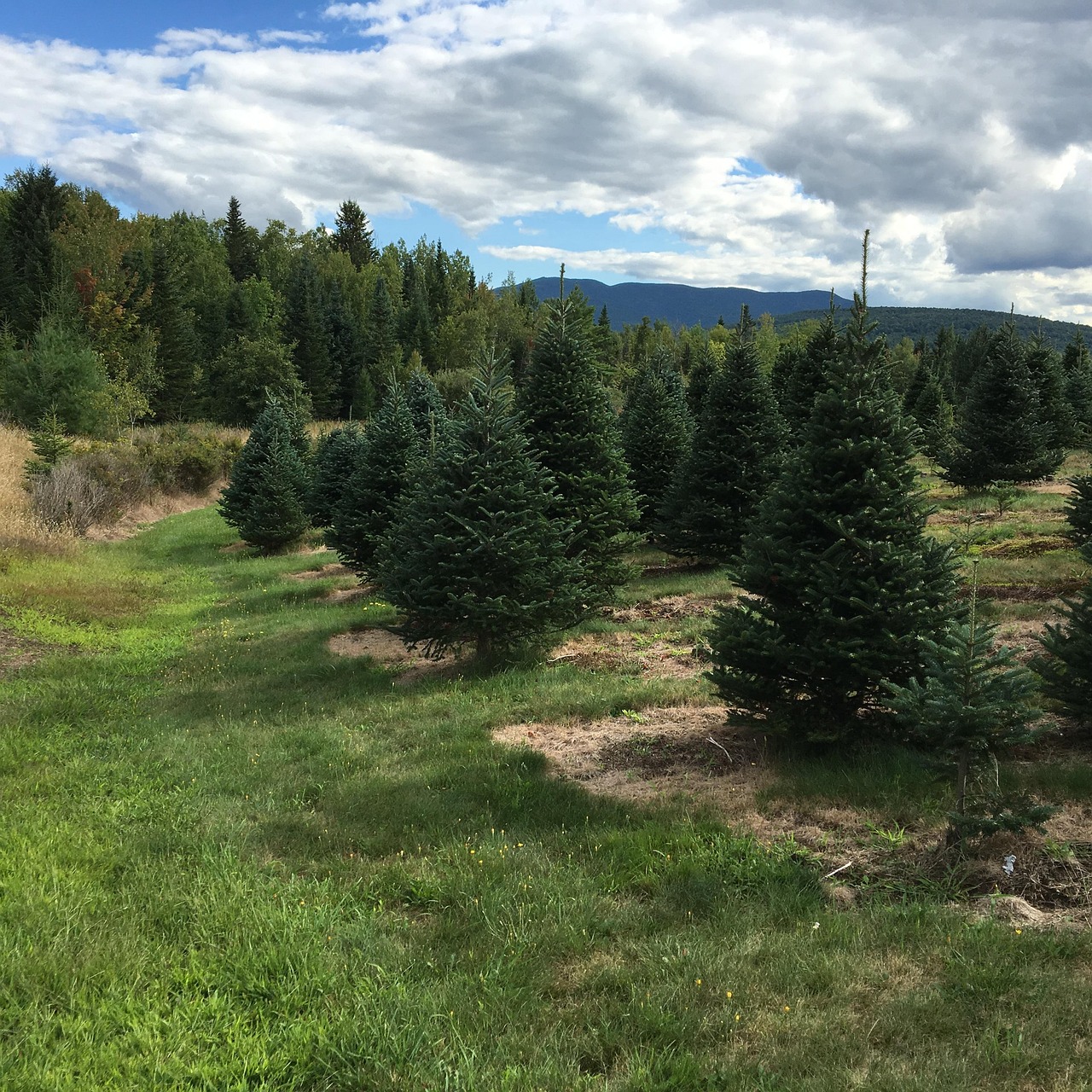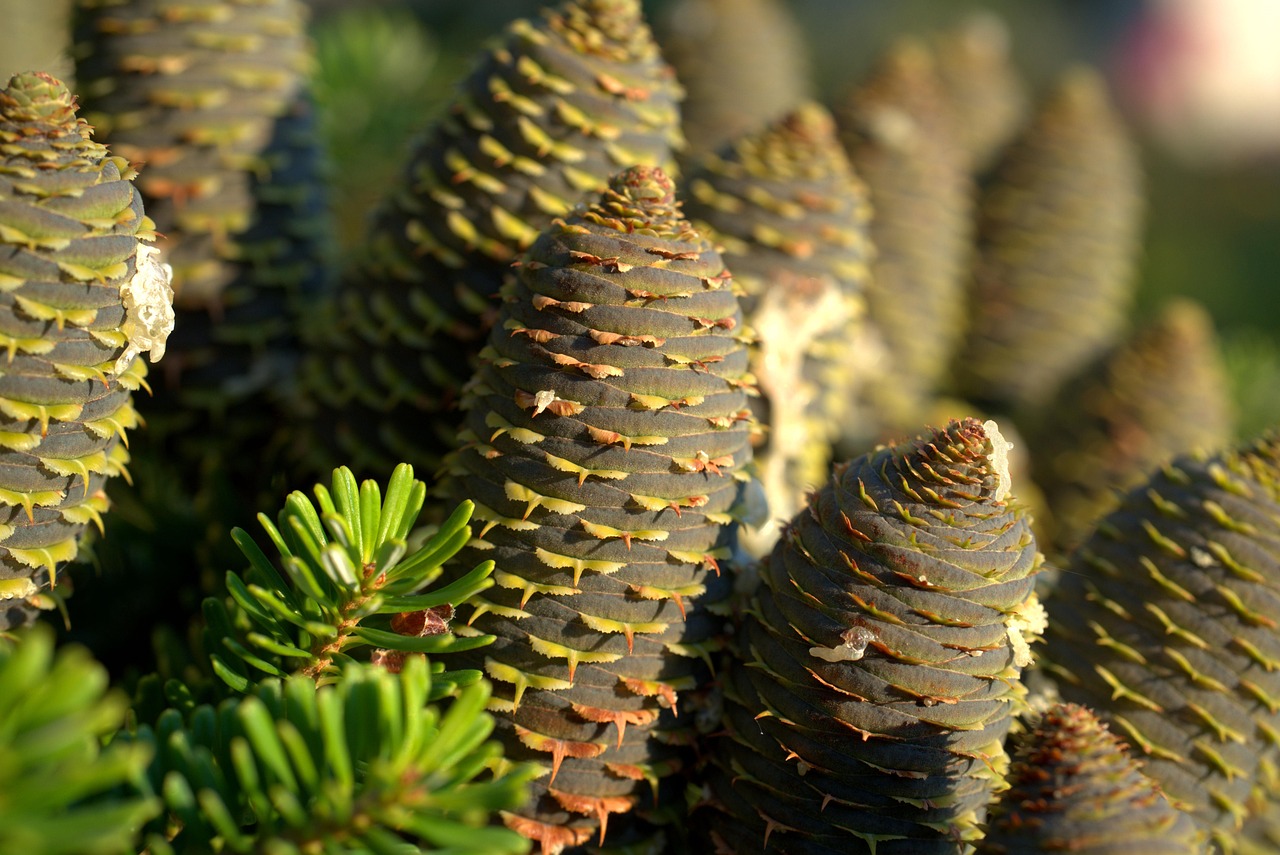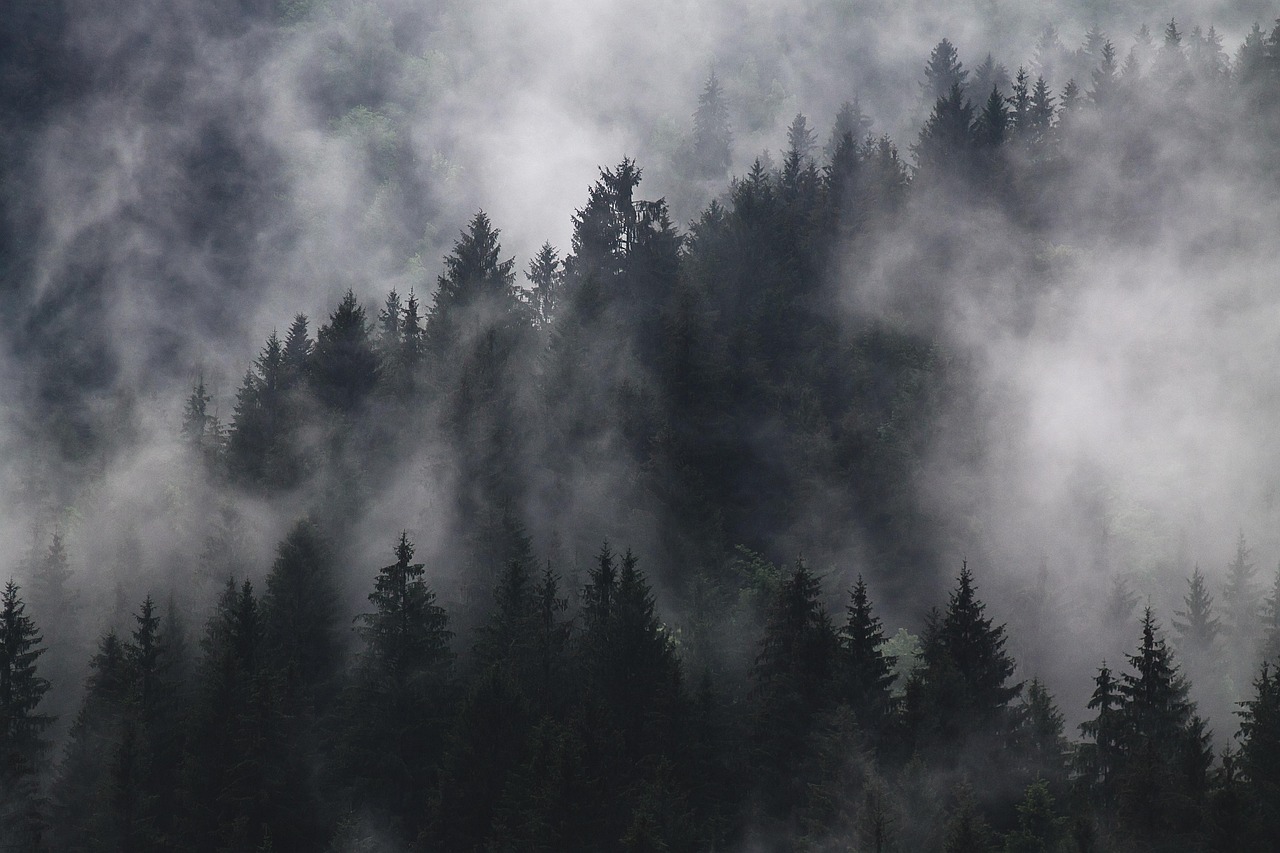Balsam fir trees require full sun to partial shade for optimal growth. Ideally, they thrive in direct sunlight for at least 6 to 8 hours each day. However, they can tolerate some shade, especially when young, but this may impact their growth rate and overall health.
Balsam fir (Abies balsamea) is a popular evergreen tree native to North America. It is well-known for its attractive appearance and pleasant aroma. Balsam firs are commonly used as Christmas trees and ornamental plants in yards and gardens. Understanding the light requirements of these trees is essential for ensuring their healthy growth and longevity.

Light plays a crucial role in the growth of any plant, including balsam fir trees. The amount of sunlight they receive directly influences their ability to photosynthesize, which is the process that allows them to convert light energy into chemical energy. This energy is necessary for growth, reproduction, and overall health.
Understanding Light Requirements
The light requirements of balsam fir trees can be categorized into several key aspects. These include the type of light needed, the duration of exposure, and the adaptability of the trees to different light conditions. Each aspect can significantly affect how well these trees grow and develop over time.
Type of Light
Balsam fir trees prefer bright, indirect light or filtered sunlight. They thrive in environments where they can receive ample sunlight without harsh, direct exposure that can cause damage. Direct sunlight can lead to needle burn, especially in young trees. It is important to find a balance to promote healthy growth.

Duration of Exposure
For optimal growth, balsam fir trees should receive about 6 to 8 hours of sunlight each day. This exposure allows them to carry out photosynthesis effectively, leading to robust development and healthy foliage. If they are planted in areas with less sunlight, their growth may be stunted.
Adaptability
While balsam firs prefer full sun, they are somewhat adaptable to partial shade conditions. Young balsam firs can grow in shaded areas, especially under the canopy of larger trees. However, prolonged exposure to low light conditions can hinder their growth potential and make them more susceptible to diseases.
Table of Light Requirements
| Aspect | Requirement |
|---|---|
| Type of Light | Bright, indirect light or filtered sunlight |
| Duration | 6 to 8 hours daily |
| Shade Tolerance | Can tolerate partial shade when young |
It is vital for gardeners and landscapers to consider these light requirements when planting balsam fir trees. Proper placement ensures that these trees will not only survive but thrive in their environment.

Moreover, understanding the light needs of balsam fir trees can also aid in their care. For instance, if a tree is not receiving enough light, it may exhibit signs such as drooping branches or yellowing needles. Identifying these symptoms early can help in making necessary adjustments to improve their growing conditions.
In addition to light requirements, other environmental factors such as soil type, moisture levels, and temperature also influence the health of balsam fir trees. However, ensuring adequate light is often the first step towards establishing a flourishing balsam fir population.
Factors Influencing Light Requirements
The light requirements of balsam fir trees are influenced by various factors. Understanding these factors can help in creating an optimal growing environment. This section discusses the most crucial aspects, including tree age, geographic location, and seasonal changes.

Tree Age
The age of a balsam fir plays a significant role in its light needs. Young balsam firs can adapt to lower light conditions, allowing them to grow under the canopy of larger trees. However, as they mature, their light requirements increase. Here are some key points regarding the impact of age on light needs:
- Seedlings: Newly germinated balsam fir seedlings can survive in partial shade. They rely on filtered sunlight until they establish strong roots.
- Juvenile Trees: As they grow, they require more light, ideally 4 to 6 hours of direct sunlight daily to foster healthy growth.
- Mature Trees: Fully grown balsam firs thrive with at least 6 to 8 hours of full sunlight daily for optimal photosynthesis and growth.
Geographic Location
The geographic location where balsam fir trees are planted significantly influences their light requirements. Different regions have varying sunlight intensity and durations throughout the year. Consider the following aspects:
- Latitude: Trees planted closer to the equator generally receive more intense sunlight year-round compared to those in northern regions.
- Elevation: Higher elevations may have increased sunlight exposure during summer months but can also experience harsher conditions like frost.
- Local Climate: Areas with frequent cloud cover or rainy seasons may not provide sufficient sunlight, necessitating careful placement to ensure adequate exposure.
Seasonal Changes
Seasonal variations can also affect the amount of light that balsam fir trees receive. During winter months, shorter days result in reduced sunlight exposure. Here are some considerations:
- Winter Dormancy: Balsam firs naturally enter a dormant phase in winter. During this time, their light requirements decrease as their metabolic activities slow down.
- Spring Growth: As days lengthen, balsam firs begin active growth. They benefit from increased light availability, which supports budding and foliage development.
- Summer Sunlight: In summer, longer days provide ample sunlight. Trees should be monitored for signs of stress or overexposure during hot months.
Signs of Insufficient Light
Identifying the signs of insufficient light is essential for maintaining healthy balsam fir trees. When these trees do not receive adequate sunlight, they may exhibit several symptoms that indicate stress or decline.
Common Symptoms
The following symptoms suggest that a balsam fir tree may not be getting enough light:
- Yellowing Needles: Needles may start to turn yellow as the tree struggles to photosynthesize effectively.
- Drooping Branches: Branches may appear weak and droopy due to lack of energy and nutrients.
- Poor Growth: The overall growth rate of the tree may decline, leading to stunted development or smaller than usual needles.
- Pest Infestation: Trees under stress from low light may become more susceptible to pests and diseases.
Addressing Light Deficiency
If a balsam fir is showing signs of insufficient light, consider taking steps to improve its growing conditions:
- Relocate the Tree: If possible, transplant the tree to a sunnier location with better access to direct sunlight.
- Crown Thinning: If surrounding trees are blocking light, consider thinning their crowns to allow more sunlight through.
- Mulching: Use mulch around the base of the tree to retain moisture and support overall health as it adapts to new light conditions.
By being proactive in addressing light deficiencies, you can help ensure that your balsam fir trees remain healthy and vibrant throughout their growth cycle.
Optimal Planting Locations for Balsam Fir Trees
Choosing the right planting location for balsam fir trees is crucial for their growth and development. The ideal site should provide the necessary light while also considering other environmental factors. Here, we will explore the best conditions for planting balsam firs, including soil type, moisture levels, and surrounding vegetation.
Soil Type
Balsam fir trees thrive in well-drained, acidic soils. Understanding the soil composition in the area where you plan to plant can make a significant difference in the tree’s health. Here are some important characteristics of suitable soil:
- pH Level: The ideal soil pH for balsam firs ranges from 4.5 to 6.0. Testing the soil can help determine if adjustments are needed.
- Texture: Sandy loam or loamy soils provide excellent drainage while retaining some moisture. Heavy clay soils can retain too much water, potentially leading to root rot.
- Nutrients: Ensure the soil is rich in organic matter and contains essential nutrients such as nitrogen, phosphorus, and potassium.
Moisture Levels
Moisture is another critical factor in the growth of balsam fir trees. These trees prefer consistently moist soils but are sensitive to prolonged waterlogging. Here are some considerations regarding moisture levels:
- Drainage: Good drainage is essential to prevent water accumulation around the roots. If the site tends to retain water, consider amending the soil or creating raised beds.
- Irrigation: During dry spells, young balsam firs may require supplemental watering to maintain adequate moisture. However, be careful not to overwater.
- Mulching: Applying mulch around the base of the tree can help retain moisture and regulate soil temperature, benefiting overall growth.
Companion Planting
Companion planting involves growing different plant species together for mutual benefits. When it comes to balsam fir trees, selecting compatible plants can enhance their growth and protect them from pests. Here are some suitable companion plants:
- Groundcovers: Low-growing plants like creeping thyme or ferns can help suppress weeds while maintaining soil moisture.
- Native Shrubs: Incorporating native shrubs such as blueberry bushes can provide additional benefits to local wildlife and improve biodiversity in the area.
- Flowering Plants: Planting flowers that attract beneficial insects can help pollinate nearby plants and control pest populations.
Plants to Avoid
Not all plants are suitable neighbors for balsam fir trees. Some species may compete for resources or promote diseases. Avoid planting:
- Agricultural Crops: Many crops require full sun and may outcompete balsam firs for light and nutrients.
- Other Conifers: Planting other conifer species nearby can increase competition for light and nutrients.
- Disease-Prone Plants: Avoid plants known for attracting pests or diseases that could spread to balsam firs.
Light Management Techniques
Implementing effective light management techniques can optimize the growing conditions for balsam fir trees. These strategies can help ensure that the trees receive adequate sunlight throughout their life cycle.
Pruning
Regular pruning can improve light penetration and air circulation around the tree’s canopy. Consider the following tips for effective pruning:
- Remove Dead Branches: Dead or diseased branches should be cut away to prevent disease spread and allow more light to reach healthy foliage.
- Crown Thinning: Thinning out dense areas of the crown can enhance light exposure to lower branches, promoting even growth.
- Timing: Prune during late winter or early spring before new growth begins to minimize stress on the tree.
Using Reflective Surfaces
If natural light is limited, consider using reflective surfaces to enhance light availability. Options include:
- Mirrors: Strategically placing mirrors around the planting area can help reflect sunlight onto the tree.
- Reflective Mulch: Certain types of mulch are designed to reflect light. This can improve light levels around young trees.
By carefully managing light exposure and considering optimal placement, you can create a thriving environment for balsam fir trees, enabling them to reach their full potential.
Additional Considerations for Balsam Fir Care
In addition to light requirements, several other factors contribute to the successful growth of balsam fir trees. These considerations can help ensure that your trees remain healthy and resilient in various environmental conditions.
Pest and Disease Management
Balsam fir trees can be susceptible to specific pests and diseases that might affect their health and growth. Being aware of these issues can help you take preventive measures:
- Pests: Common pests include the balsam twig aphid and spruce budworm. Regular inspection of the tree for any signs of infestation is crucial.
- Diseases: Root rot and needle blight are common diseases affecting balsam firs. Maintaining proper soil moisture and ensuring good air circulation around the tree can help prevent these diseases.
- Integrated Pest Management (IPM): Implementing IPM strategies can effectively manage pest populations while minimizing chemical use. This includes natural predators and organic treatments.
Seasonal Care Practices
Seasonal care practices can significantly impact the health of balsam fir trees. Here are some tips to consider throughout the year:
- Spring: As new growth begins, ensure that the trees receive adequate watering. Fertilizing with a balanced fertilizer can also promote healthy growth after winter dormancy.
- Summer: Monitor moisture levels, especially during dry spells. Mulching can help retain moisture and keep roots cool.
- Fall: As temperatures drop, consider applying mulch to protect roots from frost. This is also a good time to check for any pests and diseases before winter sets in.
- Winter: While balsam firs are dormant, they still require some care. Avoid heavy snow accumulation on branches by gently brushing off excess snow if possible.
Environmental Impact and Sustainability
Understanding the environmental impact of planting balsam fir trees is essential for promoting sustainability. Balsam firs play a crucial role in their ecosystems:
- Carbon Sequestration: Like all trees, balsam firs absorb carbon dioxide from the atmosphere, helping to mitigate climate change.
- Biodiversity Support: These trees provide habitat and food for various wildlife species, including birds and small mammals.
- Soil Conservation: The root systems of balsam firs help stabilize soil, reducing erosion and promoting healthy soil structure.
Cultivating balsam fir trees responsibly ensures that we maintain their ecological benefits while enjoying their beauty in our landscapes.
Conclusion
Balsam fir trees are remarkable evergreens that require thoughtful attention to light and environmental conditions for optimal growth. They thrive in well-drained, acidic soils and prefer full sun to partial shade, needing at least 6 to 8 hours of sunlight daily. Understanding their light needs, along with factors such as soil type, moisture levels, and companion planting, can significantly enhance their health.
By employing effective light management techniques, monitoring for pests and diseases, and implementing seasonal care practices, you can create an ideal environment for these trees. Moreover, recognizing their environmental contributions emphasizes the importance of cultivating balsam firs sustainably. With careful planning and maintenance, balsam fir trees can flourish, enriching our landscapes and ecosystems for generations to come.
